It’s hard work to get a new donor. It takes time, money, and attention to detail to get someone in the door. What’s more difficult? Keeping them.
According to Blackbaud, the retention rate for first-year donors is 27.3%.
What if you could improve your retention rate of donors by 10%, just by tailoring your communications to what your donors care about most?

Donors don’t make a second gift for a variety of reasons: They may not feel valued, may be unable to afford another gift, or may find an organization that feels more deserving.
Furthermore, donors invariably stop giving because your communications simply don’t interest them. Adrian Sargeant put it very succinctly in his report, “Managing Donor Defection”:
“Many nonprofits, for example, still continue to send every communication to every donor on the database. No attempt is made to segment the database by donor interests, level of gift, or something else. The majority of donors may not care, but a significant number may become disenchanted over time and elect to divert their funds elsewhere.”
At Causemo, we’re tackling the “disenchantment” problem by using data-driven journeys that tailor multi-channel communications based on a supporter’s demonstrated interests.
For example, Causemo’s platform will send a group of lapsed donors an initial sequence of emails, each including different topics. At the same time, the system will coordinate targeted digital ads on those same topics. Different people will be interested in different topics you’re communicating about.
Let’s say Jane Donor clicks on topic A, showing her interest in nutrition. Alex Donor clicks on topic B, showing his interest in sports programs. And Jack Donor clicks on topic C, revealing his interest in after-school tutoring.
What happens next for most organizations is that Jane, Alex, and Jack are all sent the next communication scheduled in the content calendar: an article about summer programs. Clearly, none of the three donors have demonstrated any interest in this topic. If you execute this non-personalized messaging multiple times, the donor is sure to be turned off, and perhaps not donate again.
Journey-based marketing solves this “disenchantment” problem by listening to the signals your donors are sending you. The next content and offers in the individual’s journey to donate are automatically personalized.
In Causemo’s case, our machine learning technology captures the unique interests of these three donors. The system automatically triggers the next email and delivers ads with topic A for Jane, topic B for Alex, and topic C for Jack. The landing pages and donation forms that are delivered dynamically populate with images and copy that align with their interests. Using this data-driven personalization across channels results in increased retention rates of donors that are significantly better than mass blast, non-personalized communications.
Why does this work? Because journey-marketing addresses donors’ core needs and wants. Specifically, the programs:
1. Deliver value: Demonstrate what your organization has been able to accomplish in the program area of most interest to the donor.
2. Rebuild trust: You have shown care in getting to know the donor by communicating to them about what they value. You can take the time to rebuild trust because technology allows you to automate an entire series of content based on what donors care about before you make the ask.
3. Facilitate a personalized ask: The ask you make is directly related to what they told you they care about. In this way, you don’t send multiple non-relevant communications that will turn donors off from you.
We’ve heard countless times that retention and recapturing donors is difficult. At the same time, it is a major priority for many organizations. However, there are barriers around time, staff capacity, and the ROI when trying to deliver personalized communications to re-engage lapsed donors.
Causemo’s Journey Platform for nonprofits leverages data and technology to produce what you’ve always wanted: a highly personal, interest-based message stream that will build trust, deliver value, and generate better results than your traditional mass marketing program. After all, it’s that blast, mass, non-personalized marketing program that turned your donors off in the first place. So, why wouldn’t you want to change the game and show your donors that you listen and are worthy of their support?










